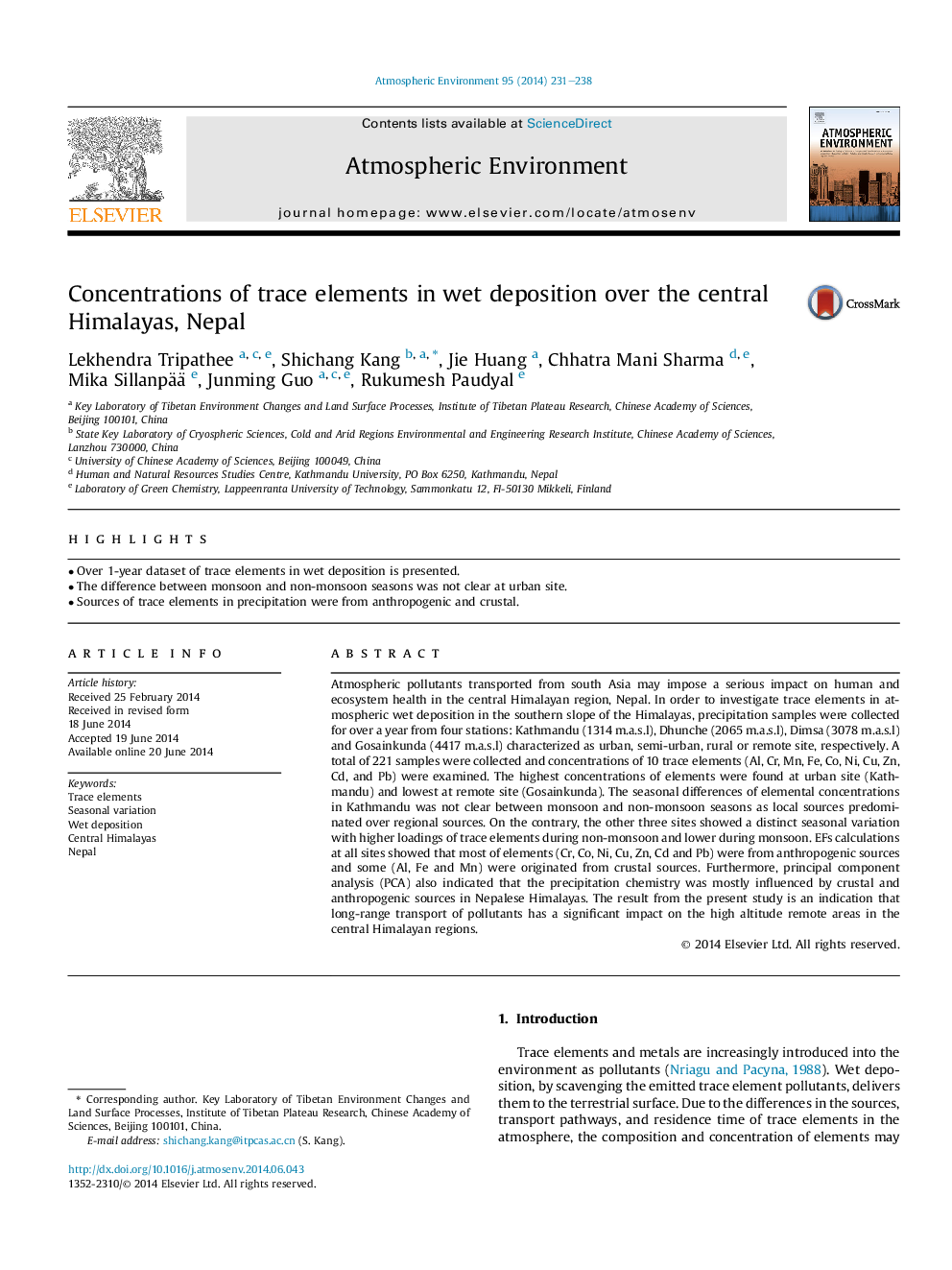| Article ID | Journal | Published Year | Pages | File Type |
|---|---|---|---|---|
| 6339200 | Atmospheric Environment | 2014 | 8 Pages |
Abstract
Atmospheric pollutants transported from south Asia may impose a serious impact on human and ecosystem health in the central Himalayan region, Nepal. In order to investigate trace elements in atmospheric wet deposition in the southern slope of the Himalayas, precipitation samples were collected for over a year from four stations: Kathmandu (1314Â m.a.s.l), Dhunche (2065Â m.a.s.l), Dimsa (3078Â m.a.s.l) and Gosainkunda (4417Â m.a.s.l) characterized as urban, semi-urban, rural or remote site, respectively. A total of 221 samples were collected and concentrations of 10 trace elements (Al, Cr, Mn, Fe, Co, Ni, Cu, Zn, Cd, and Pb) were examined. The highest concentrations of elements were found at urban site (Kathmandu) and lowest at remote site (Gosainkunda). The seasonal differences of elemental concentrations in Kathmandu was not clear between monsoon and non-monsoon seasons as local sources predominated over regional sources. On the contrary, the other three sites showed a distinct seasonal variation with higher loadings of trace elements during non-monsoon and lower during monsoon. EFs calculations at all sites showed that most of elements (Cr, Co, Ni, Cu, Zn, Cd and Pb) were from anthropogenic sources and some (Al, Fe and Mn) were originated from crustal sources. Furthermore, principal component analysis (PCA) also indicated that the precipitation chemistry was mostly influenced by crustal and anthropogenic sources in Nepalese Himalayas. The result from the present study is an indication that long-range transport of pollutants has a significant impact on the high altitude remote areas in the central Himalayan regions.
Related Topics
Physical Sciences and Engineering
Earth and Planetary Sciences
Atmospheric Science
Authors
Lekhendra Tripathee, Shichang Kang, Jie Huang, Chhatra Mani Sharma, Mika Sillanpää, Junming Guo, Rukumesh Paudyal,
